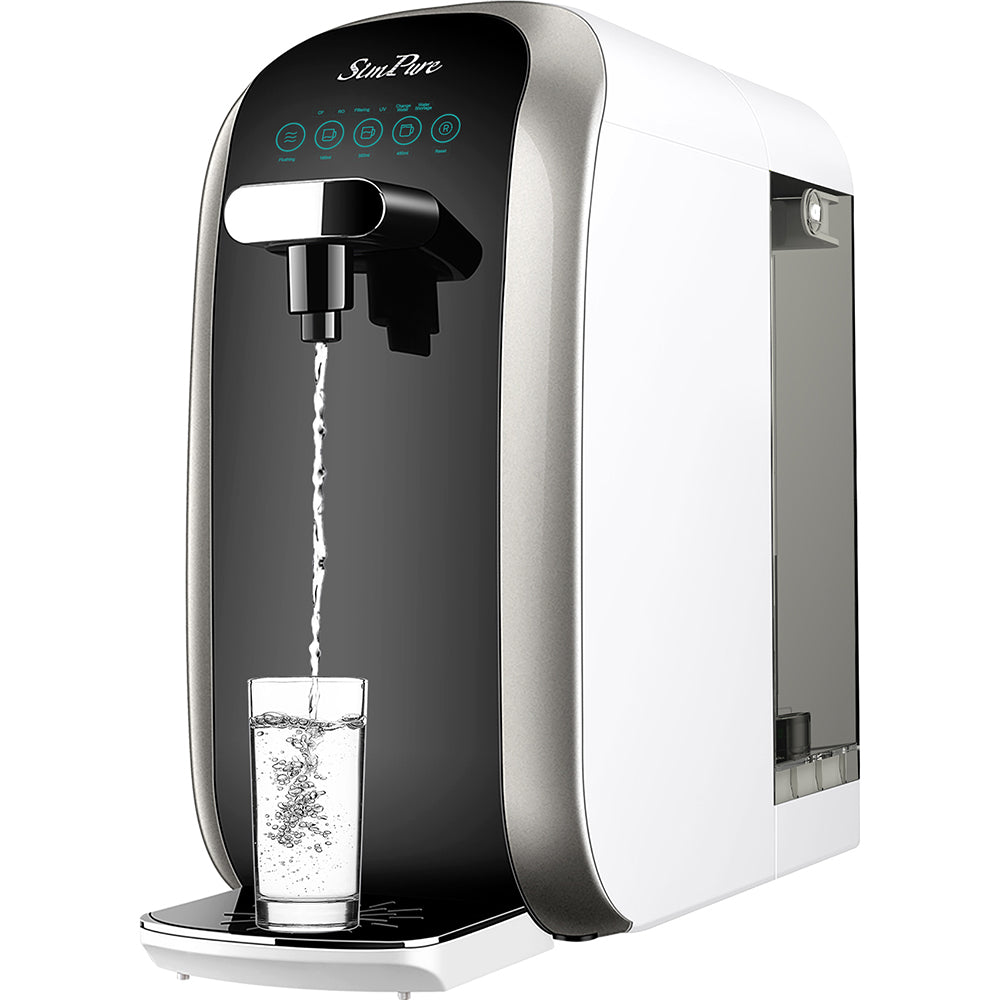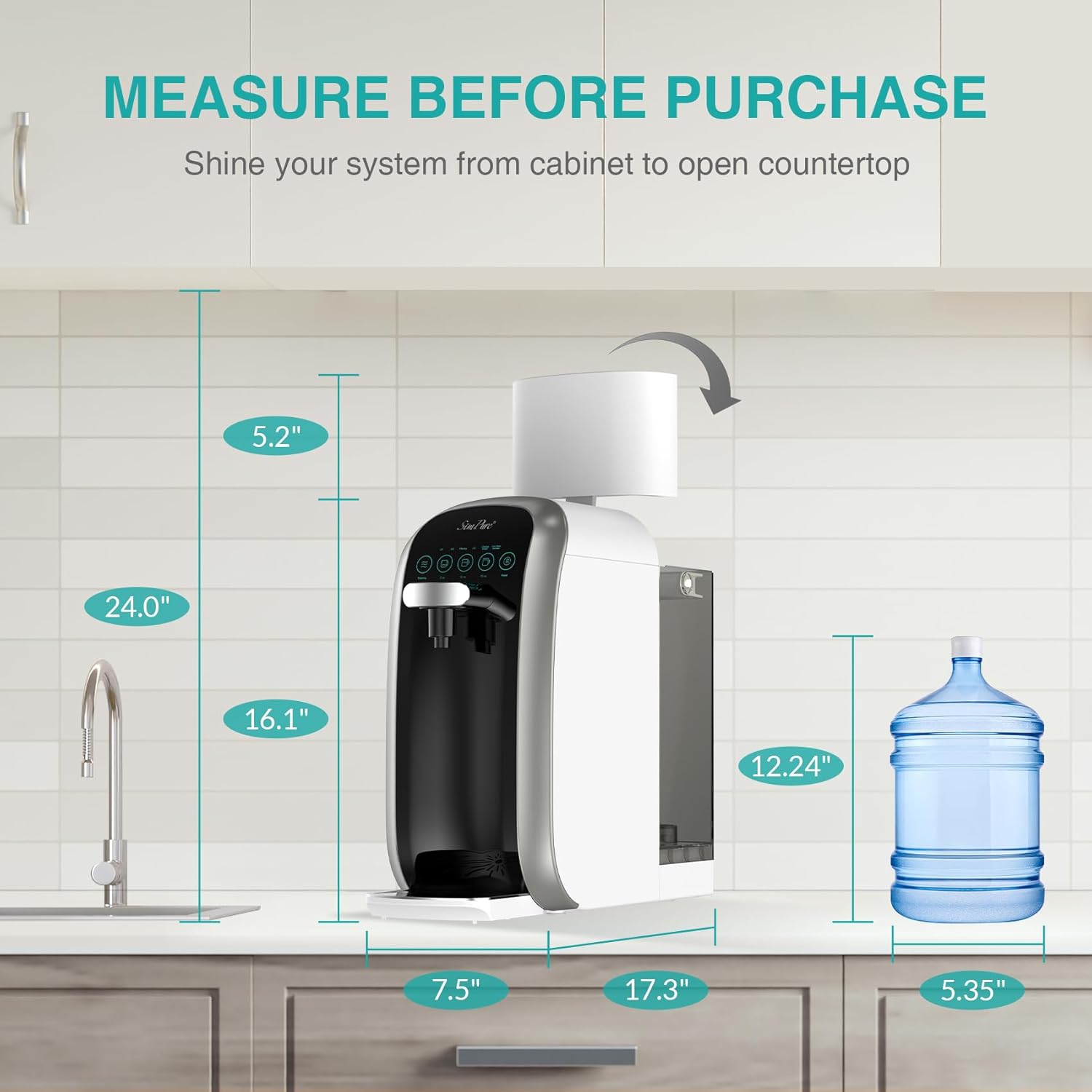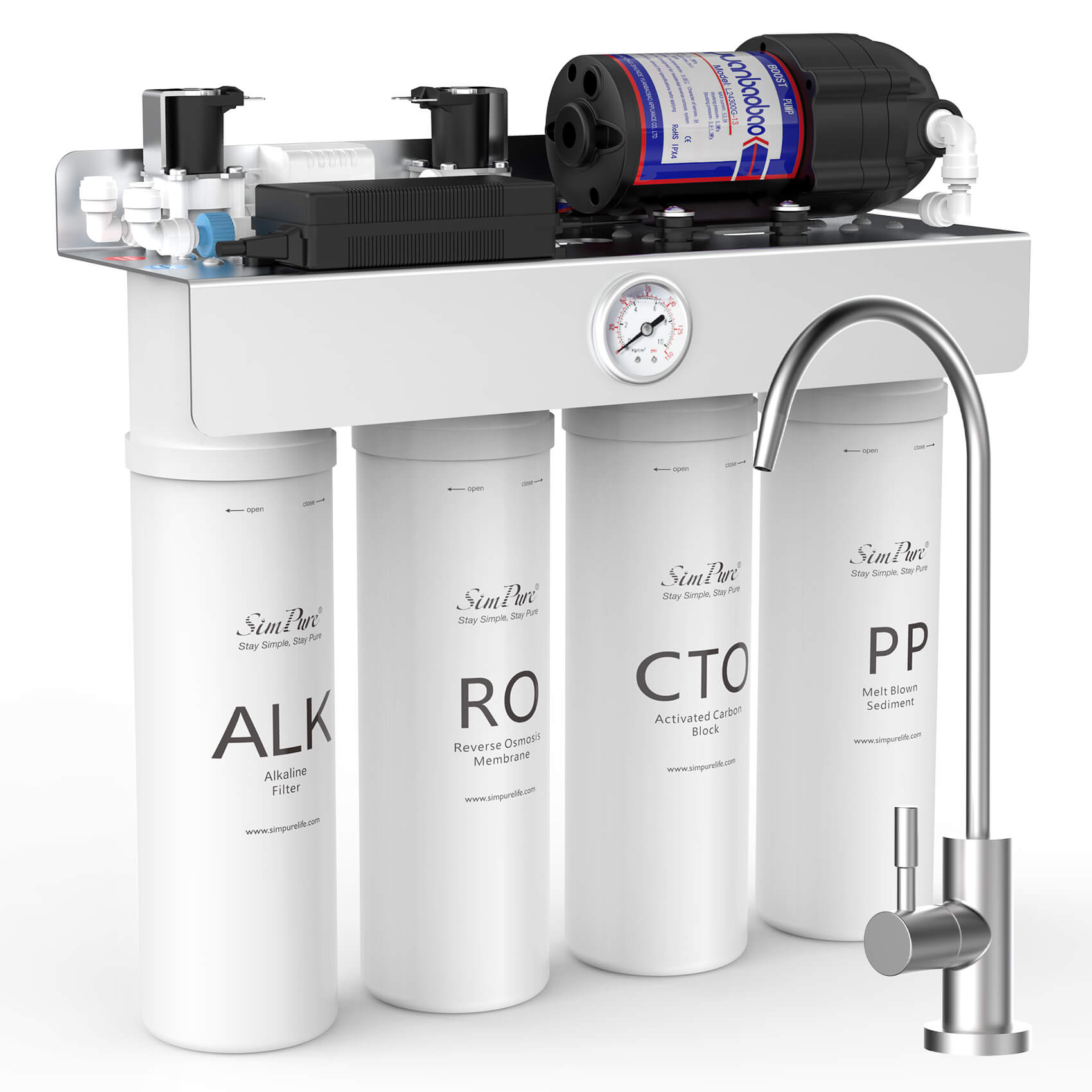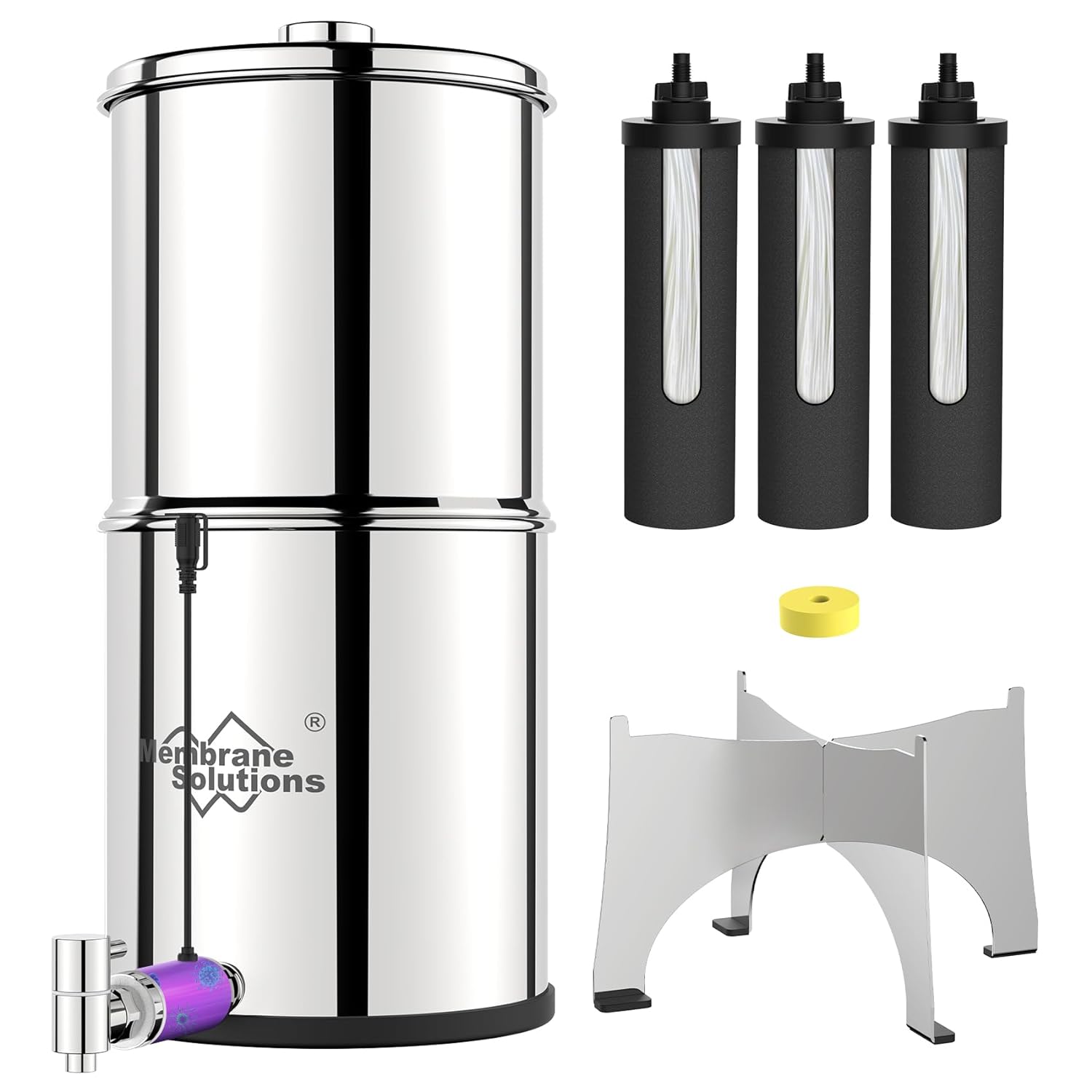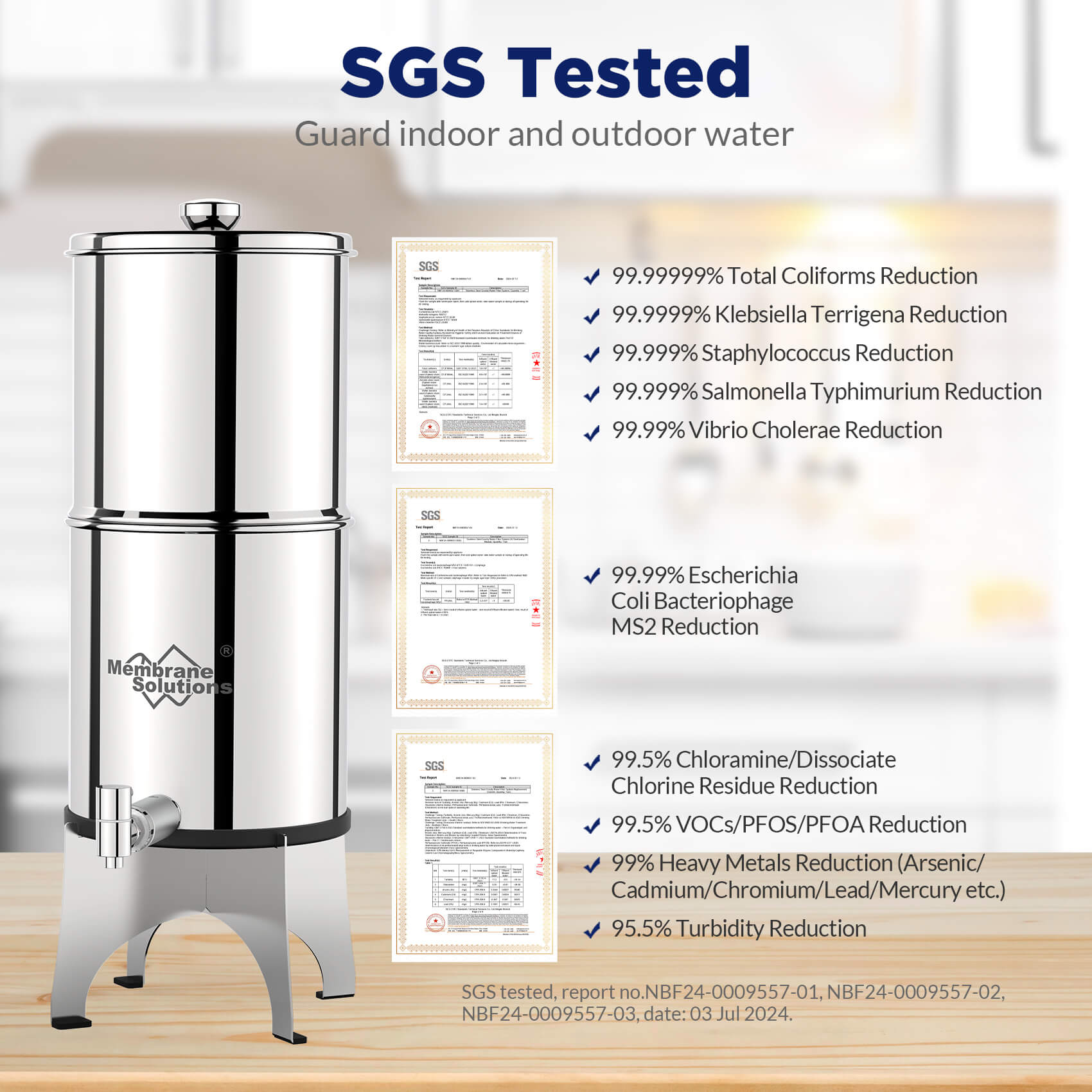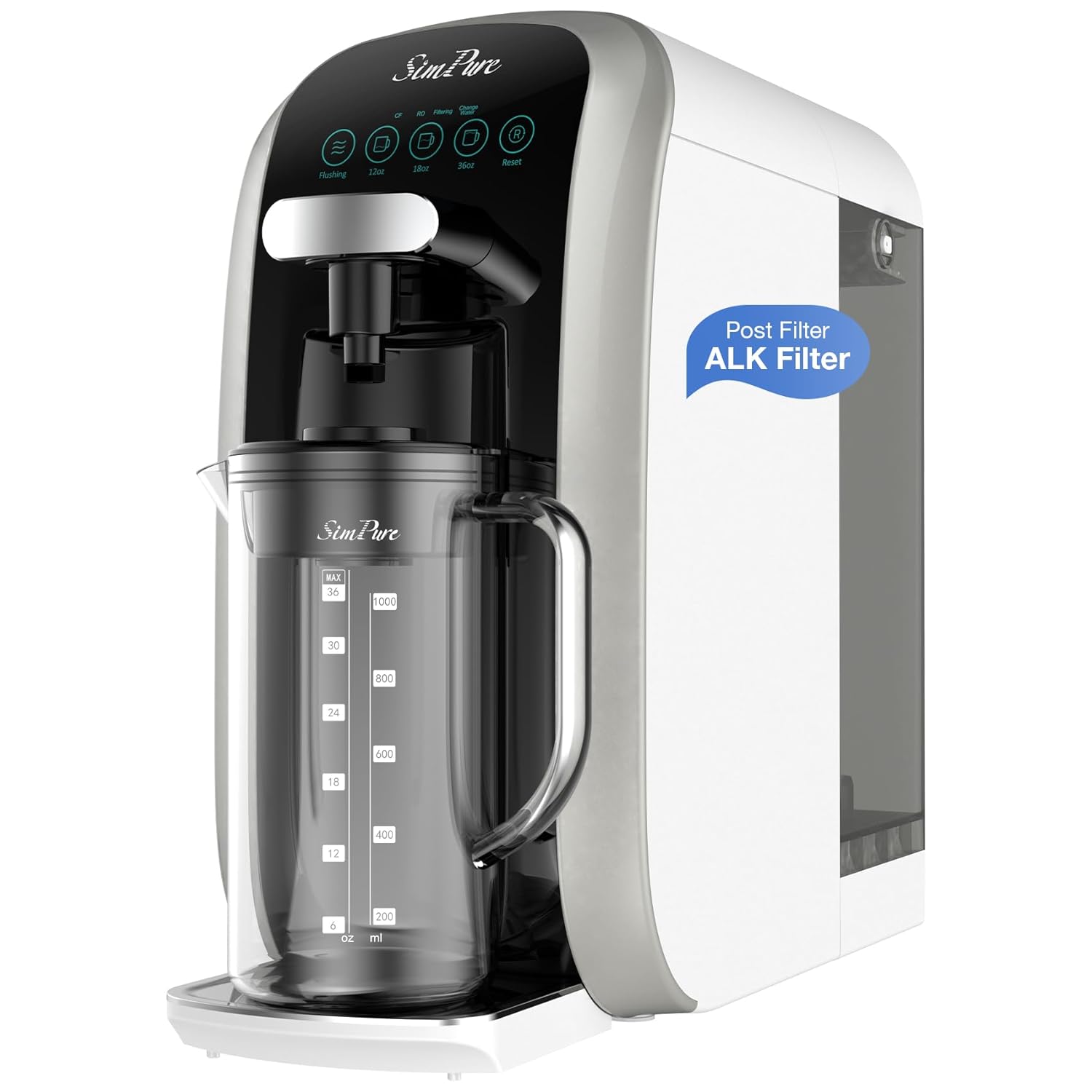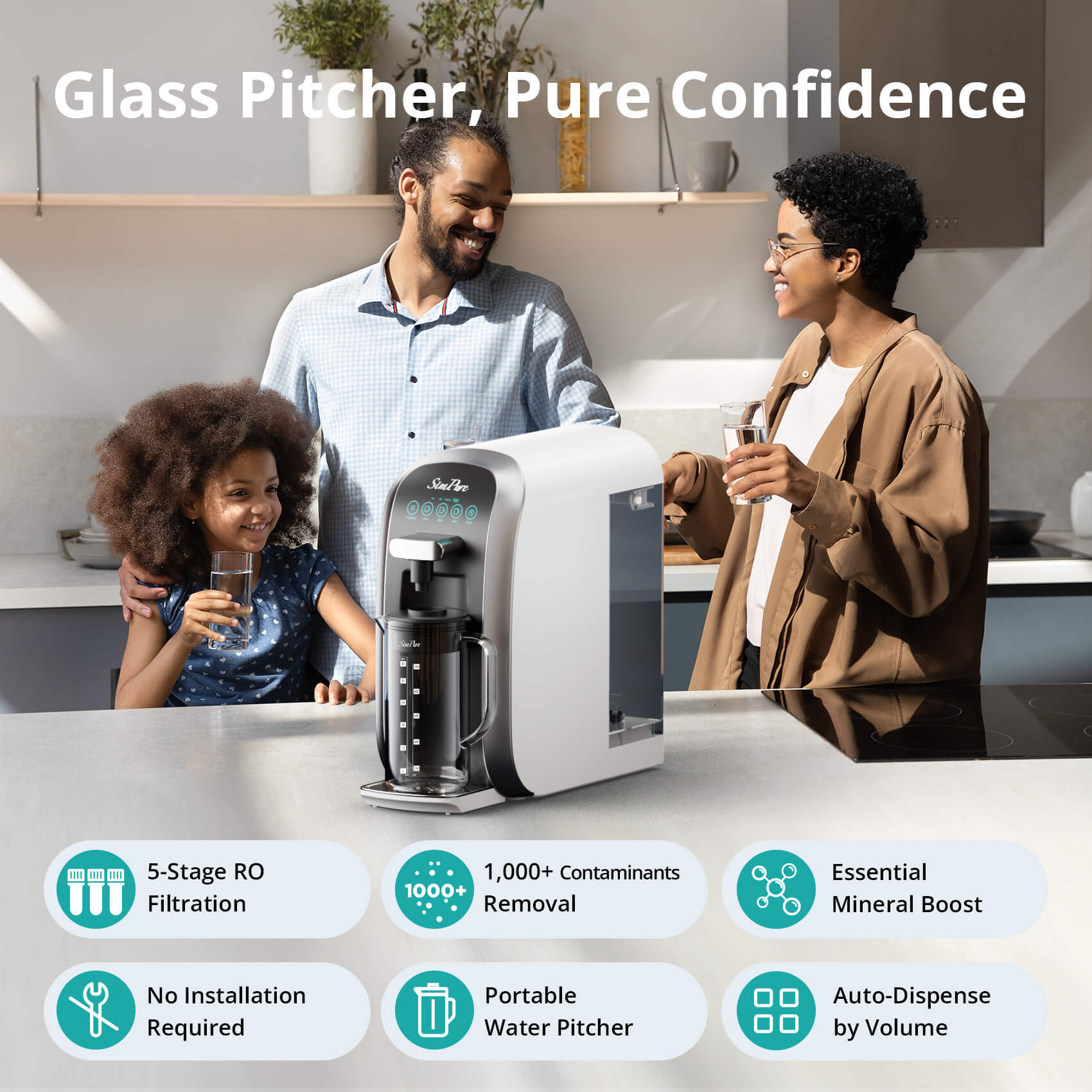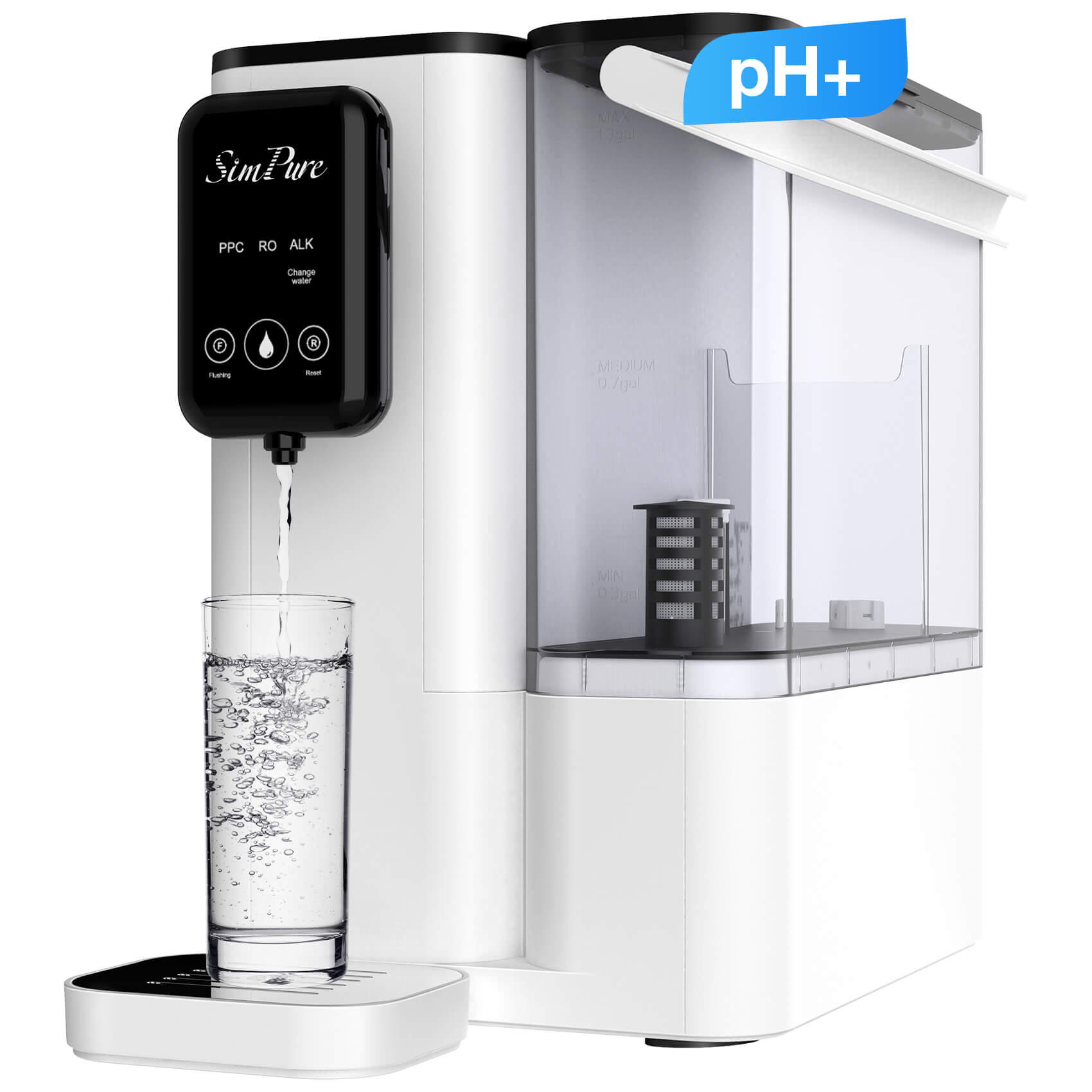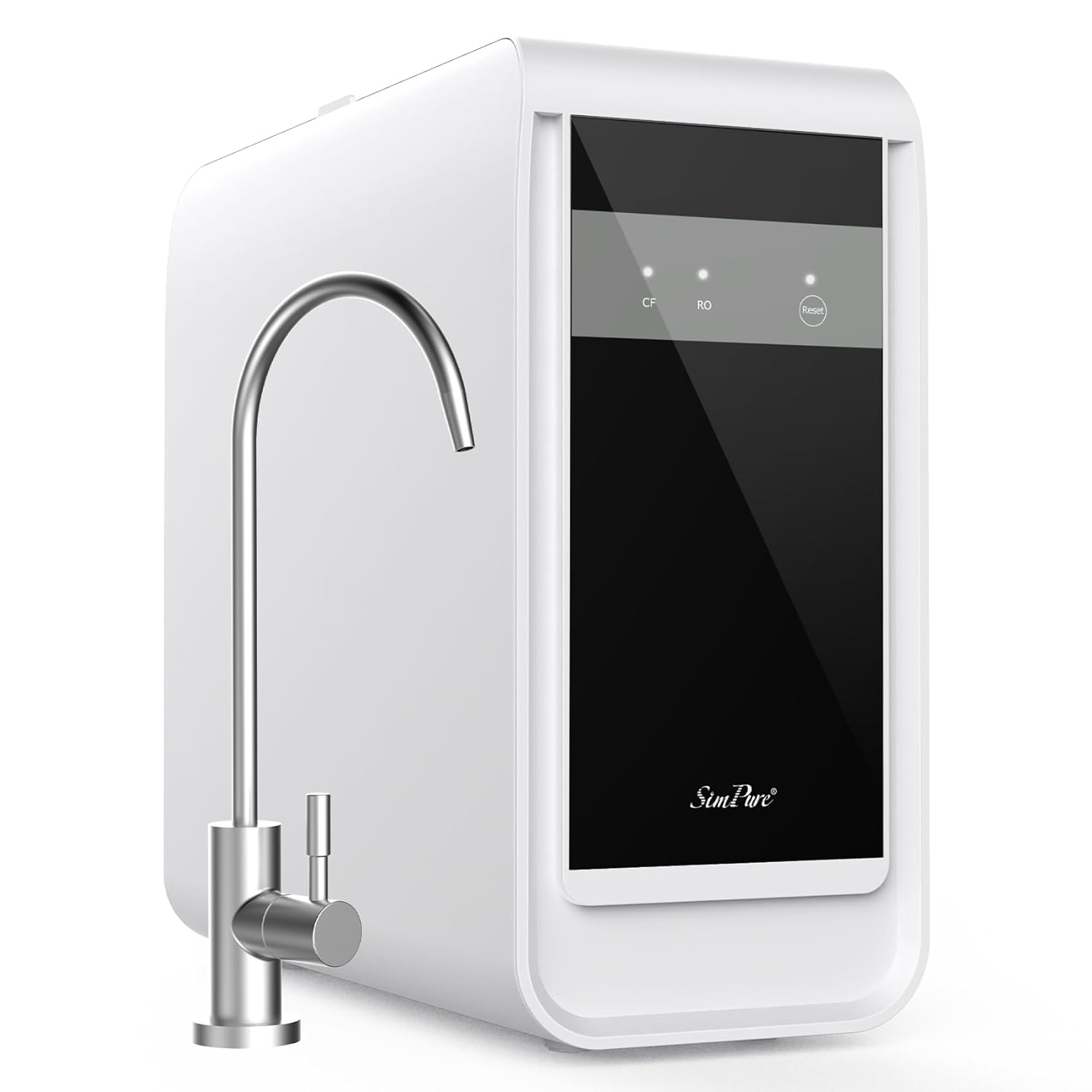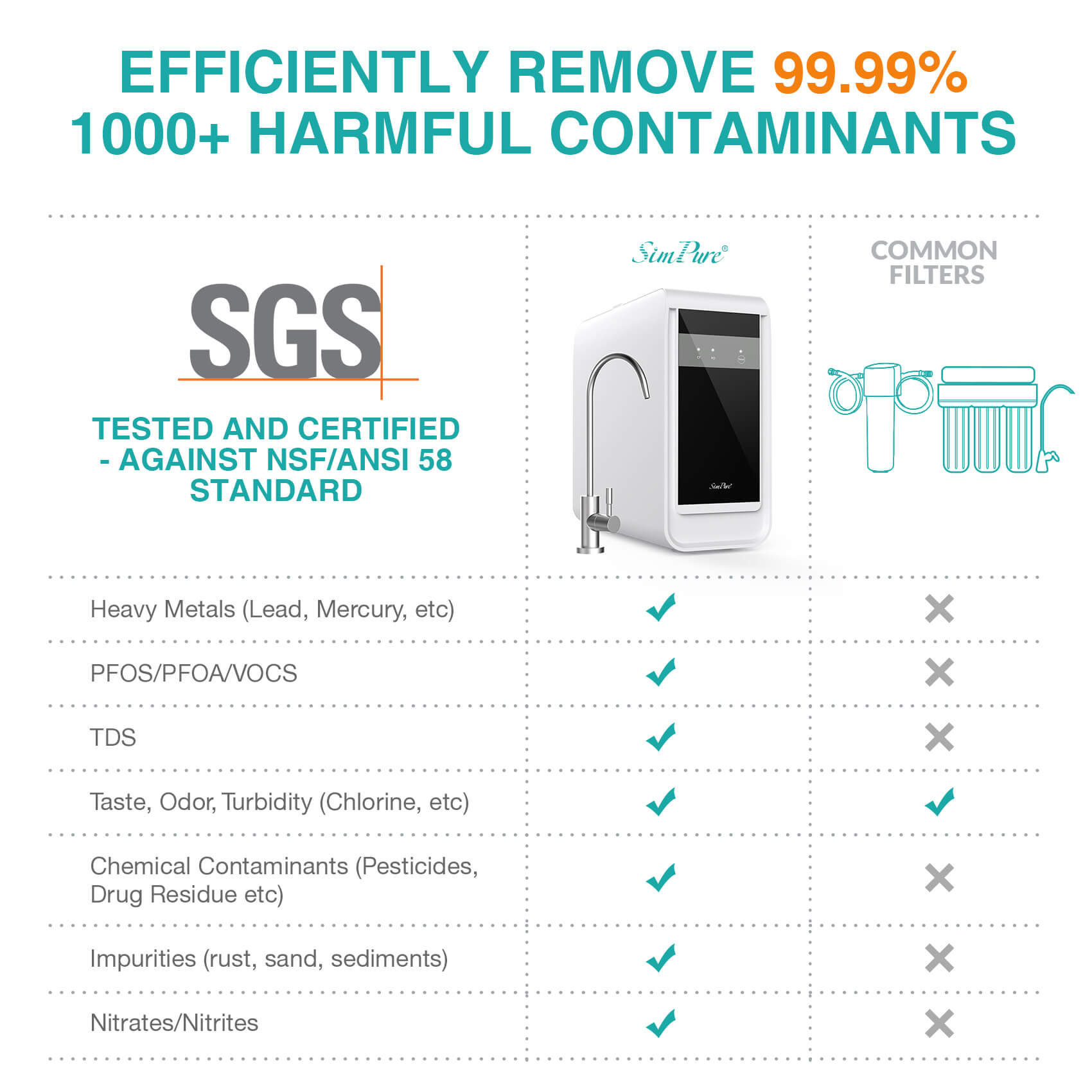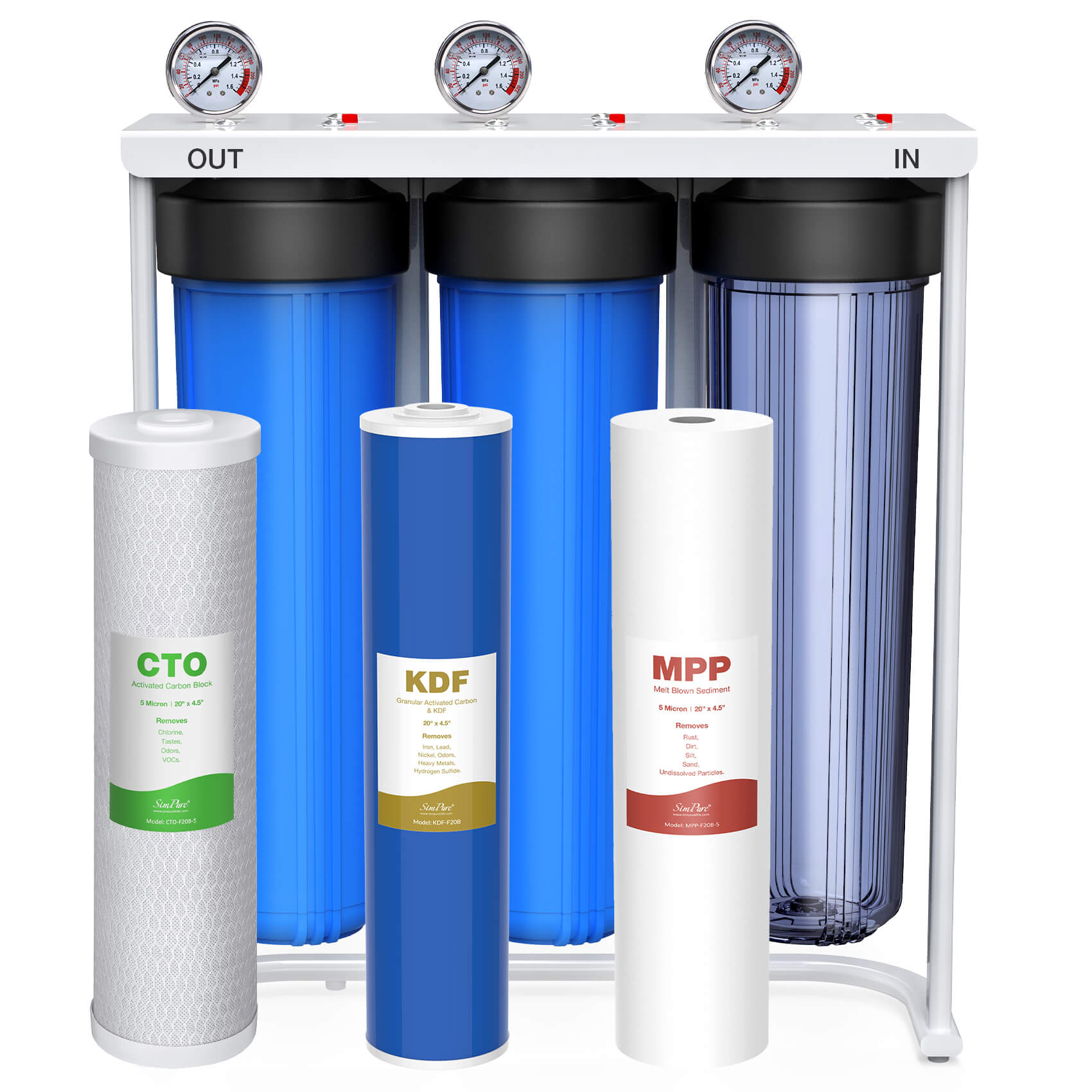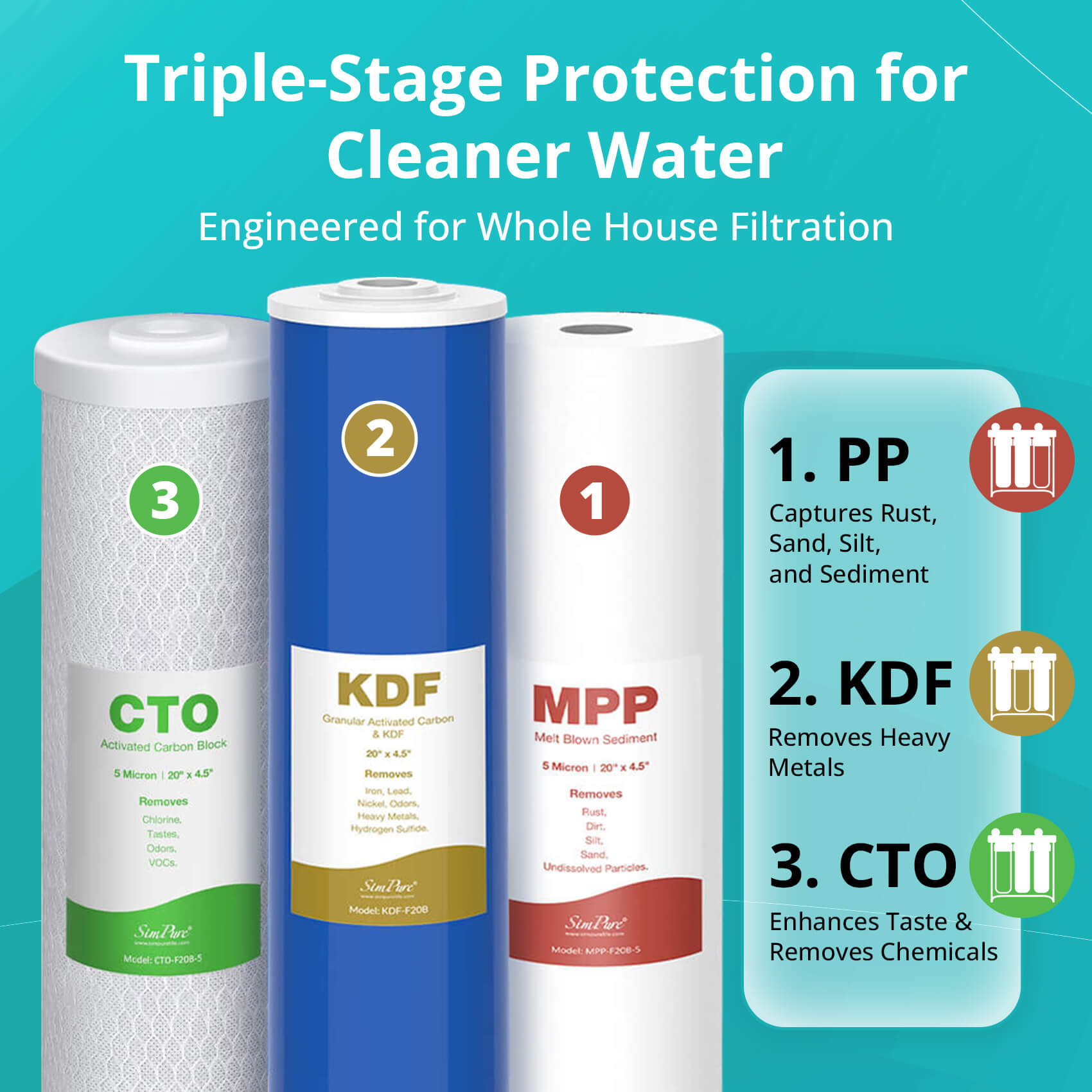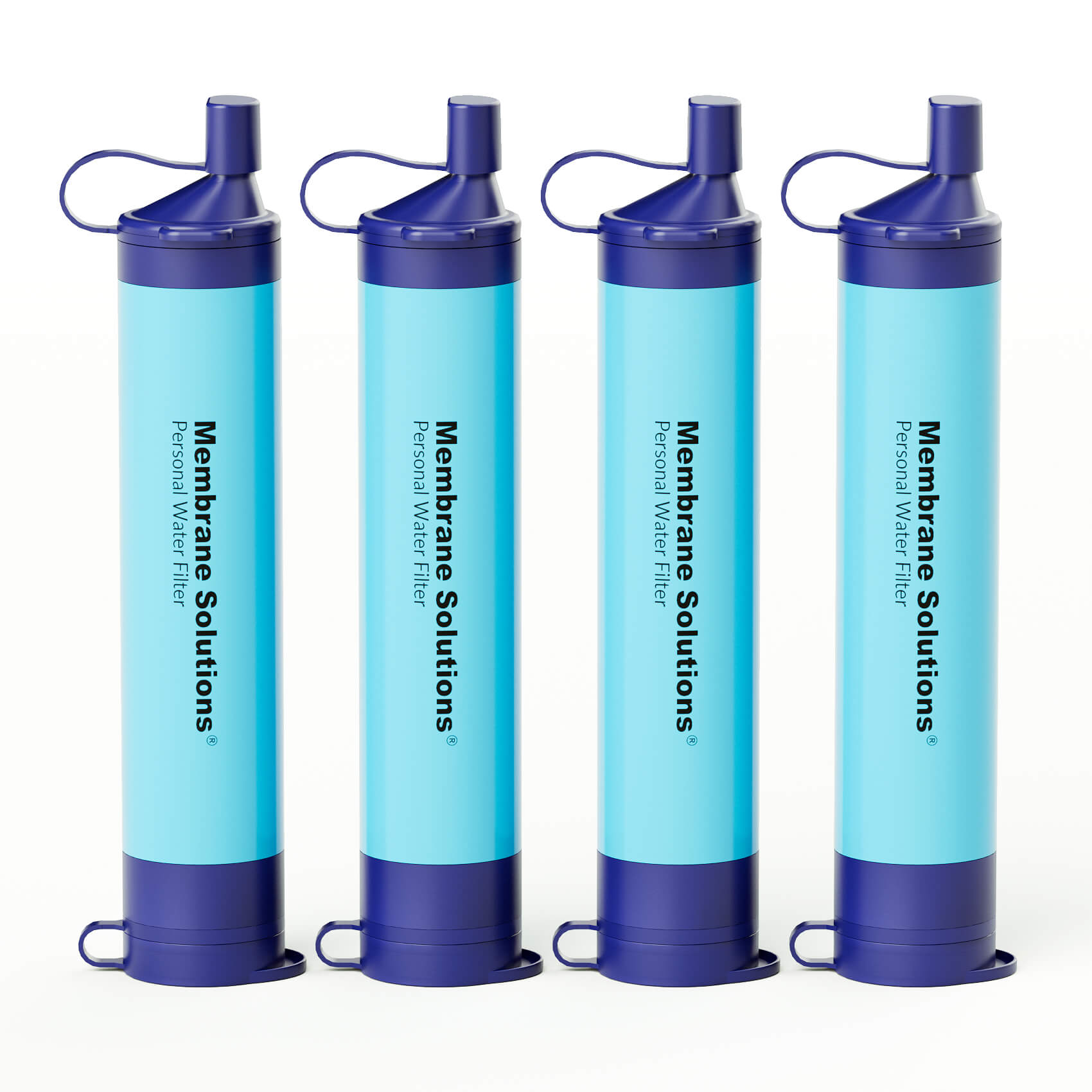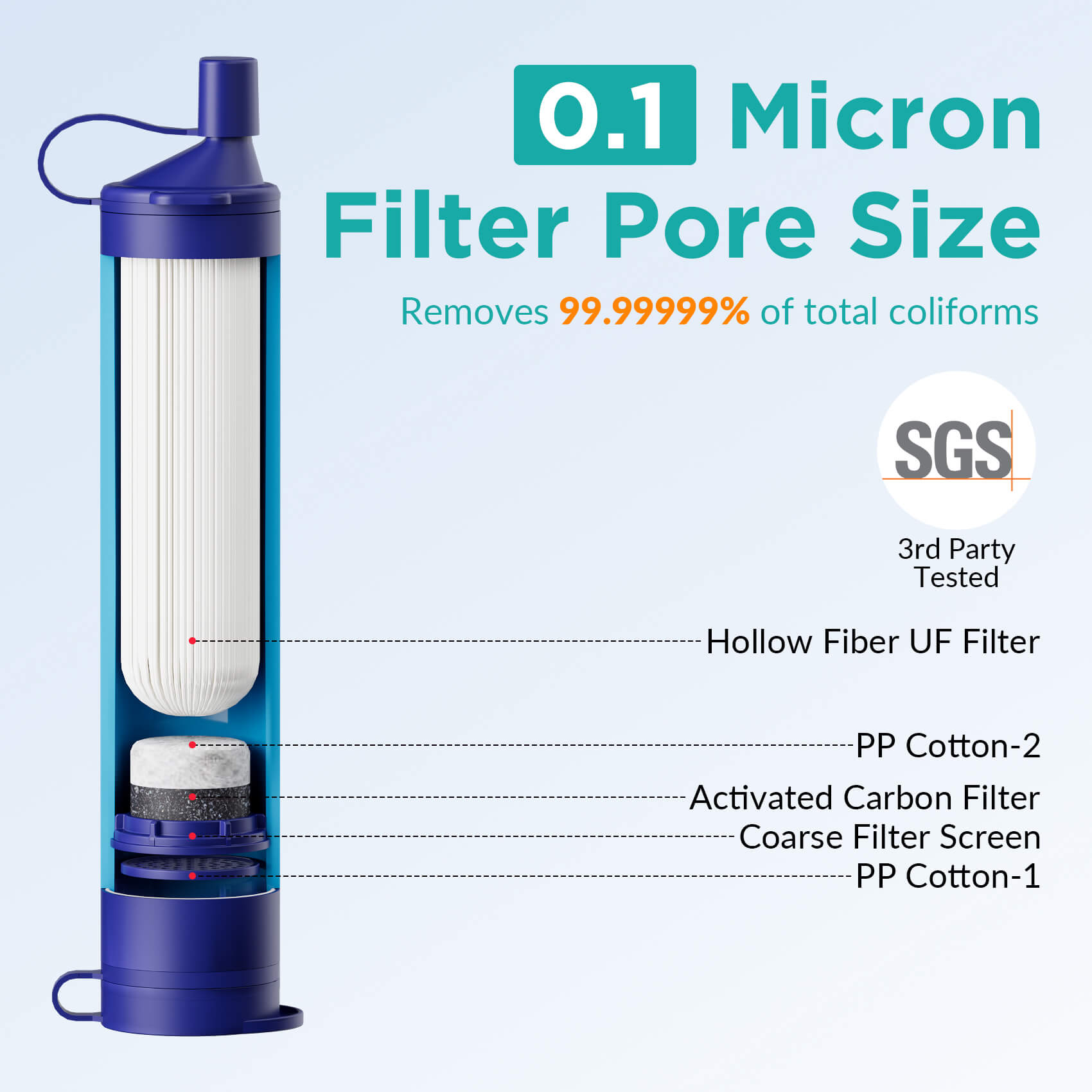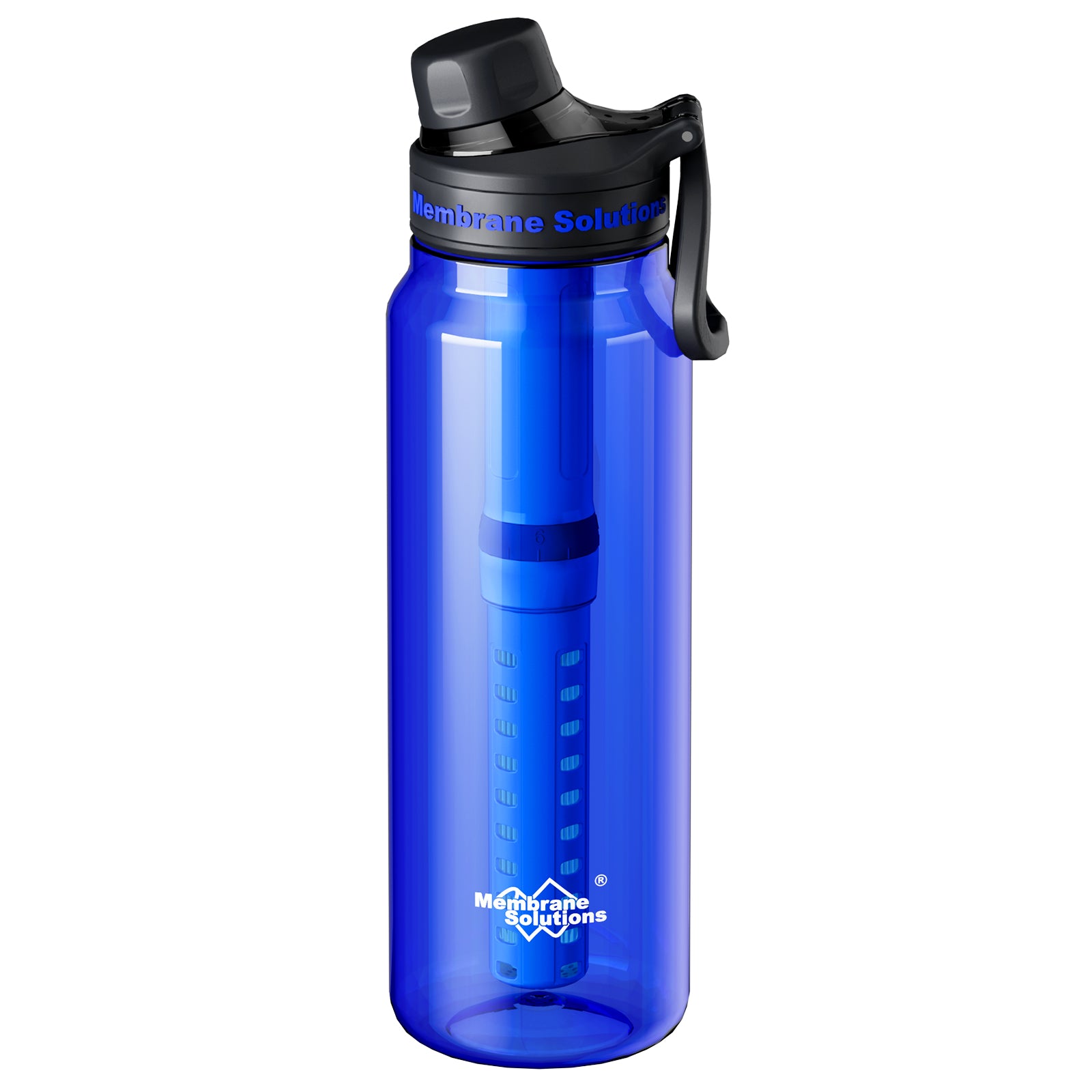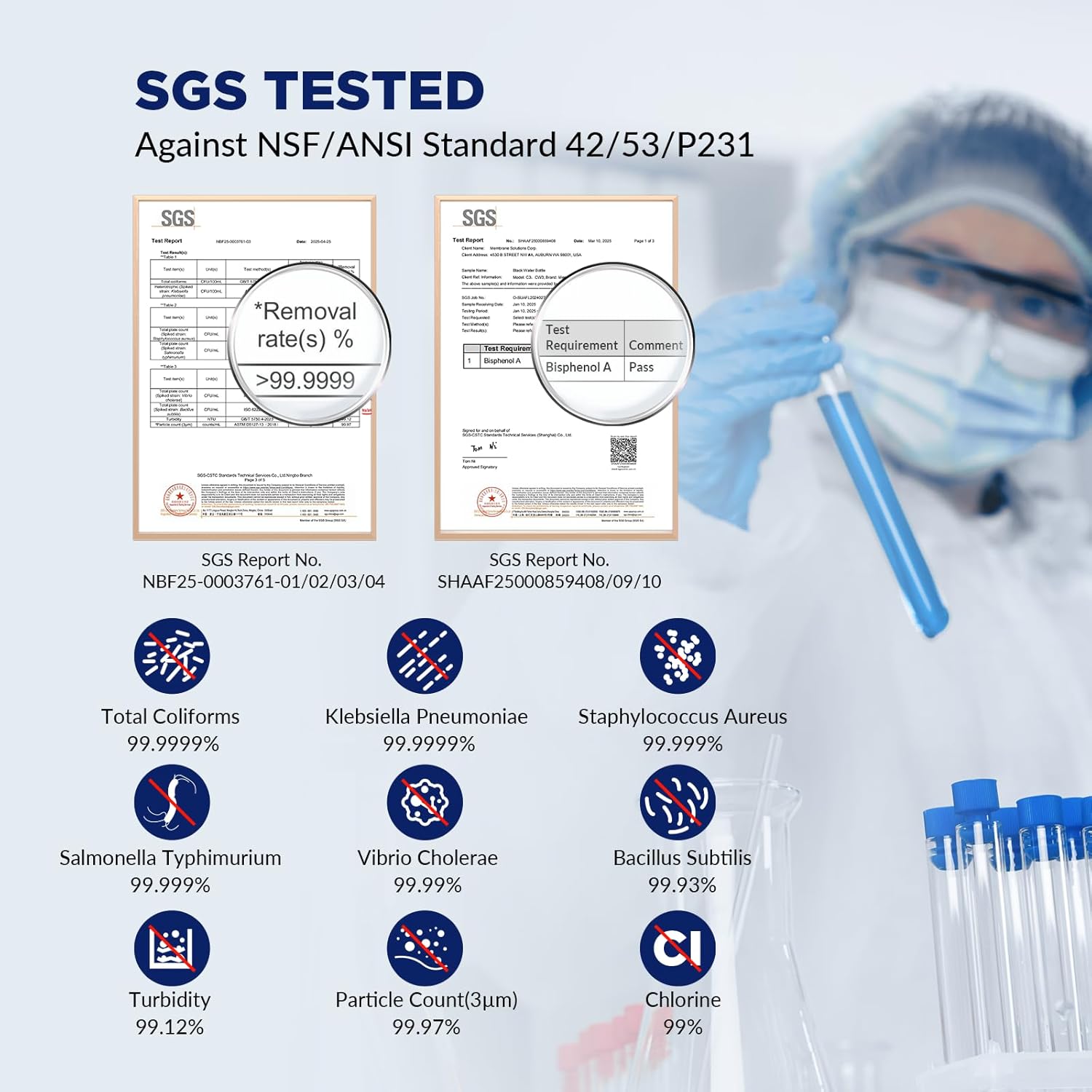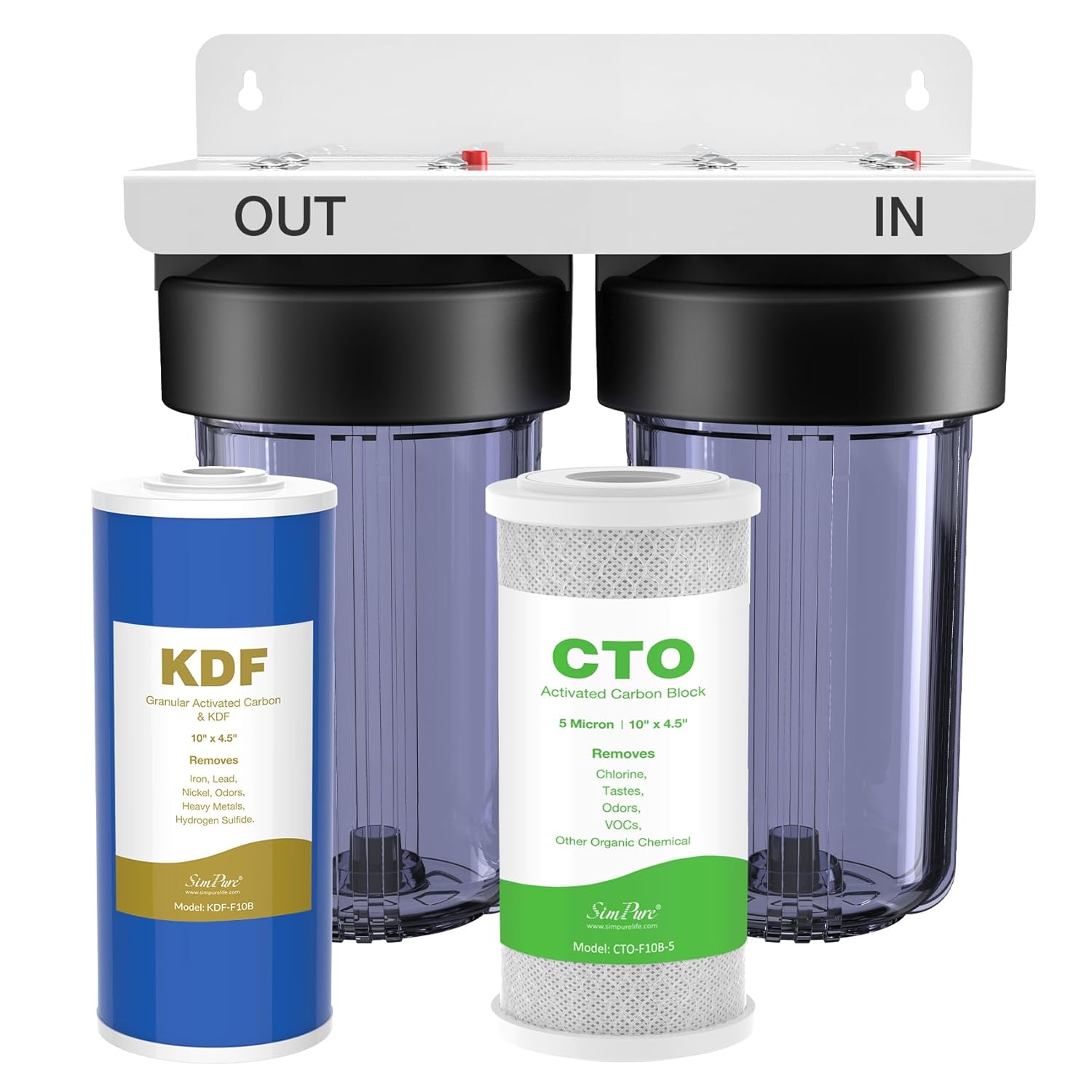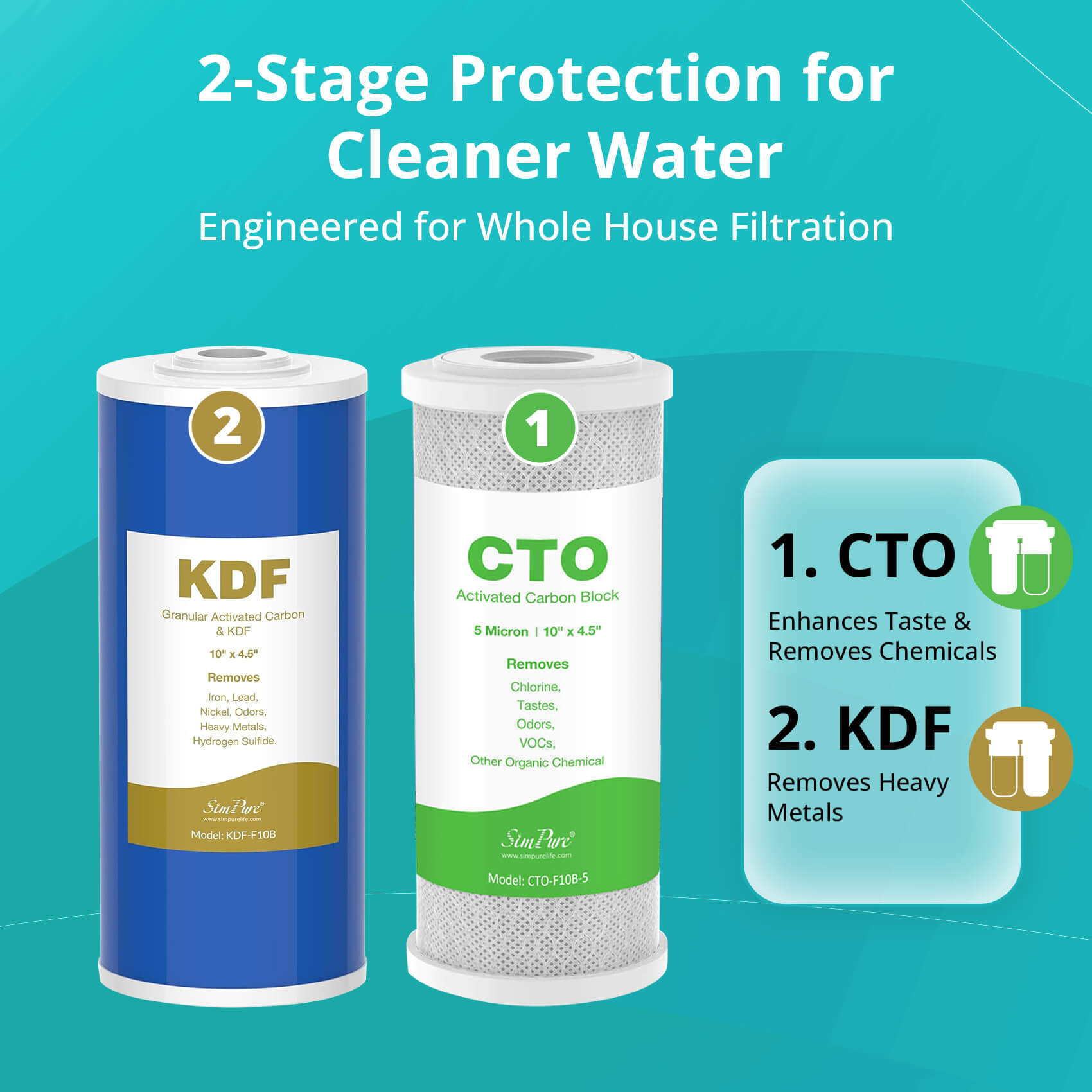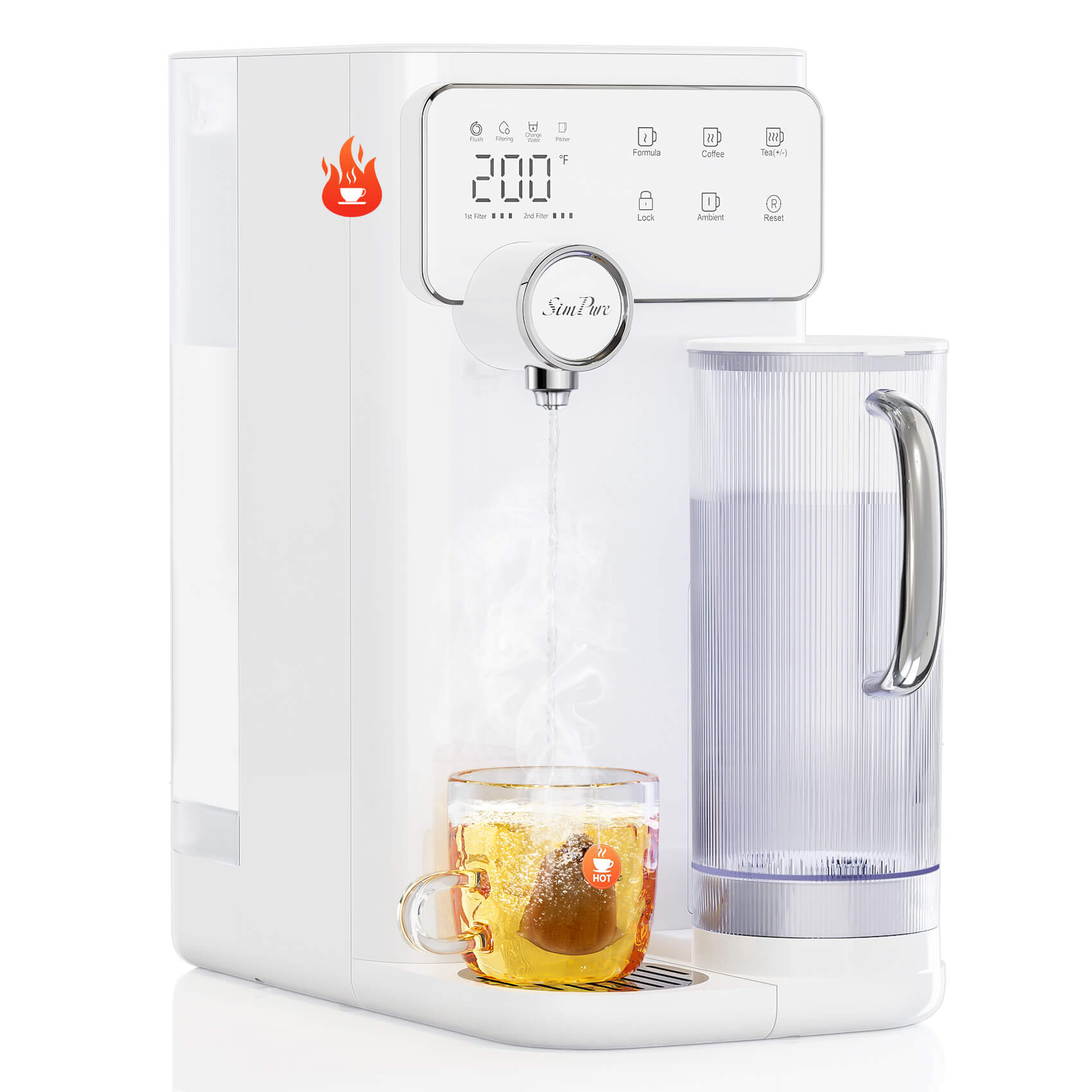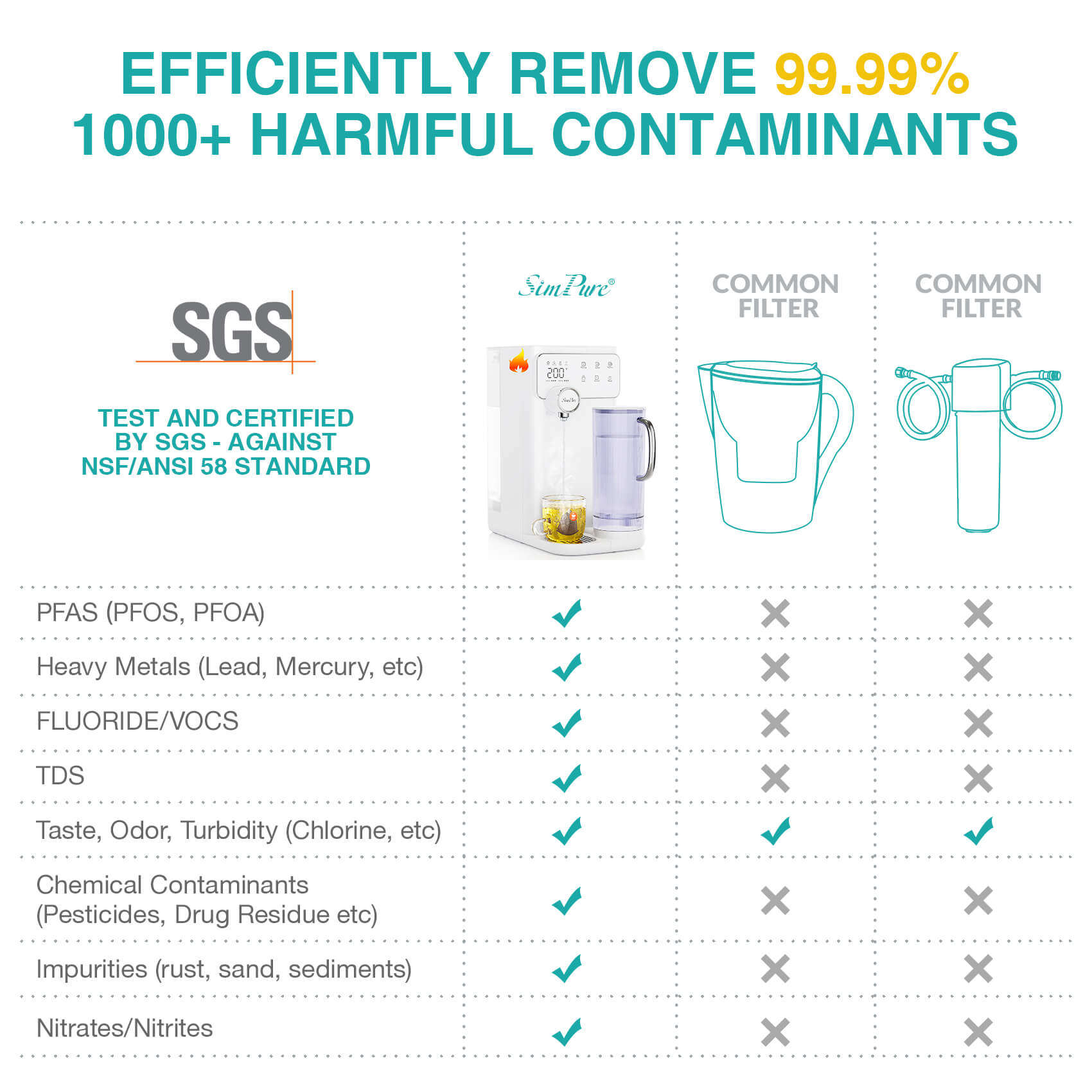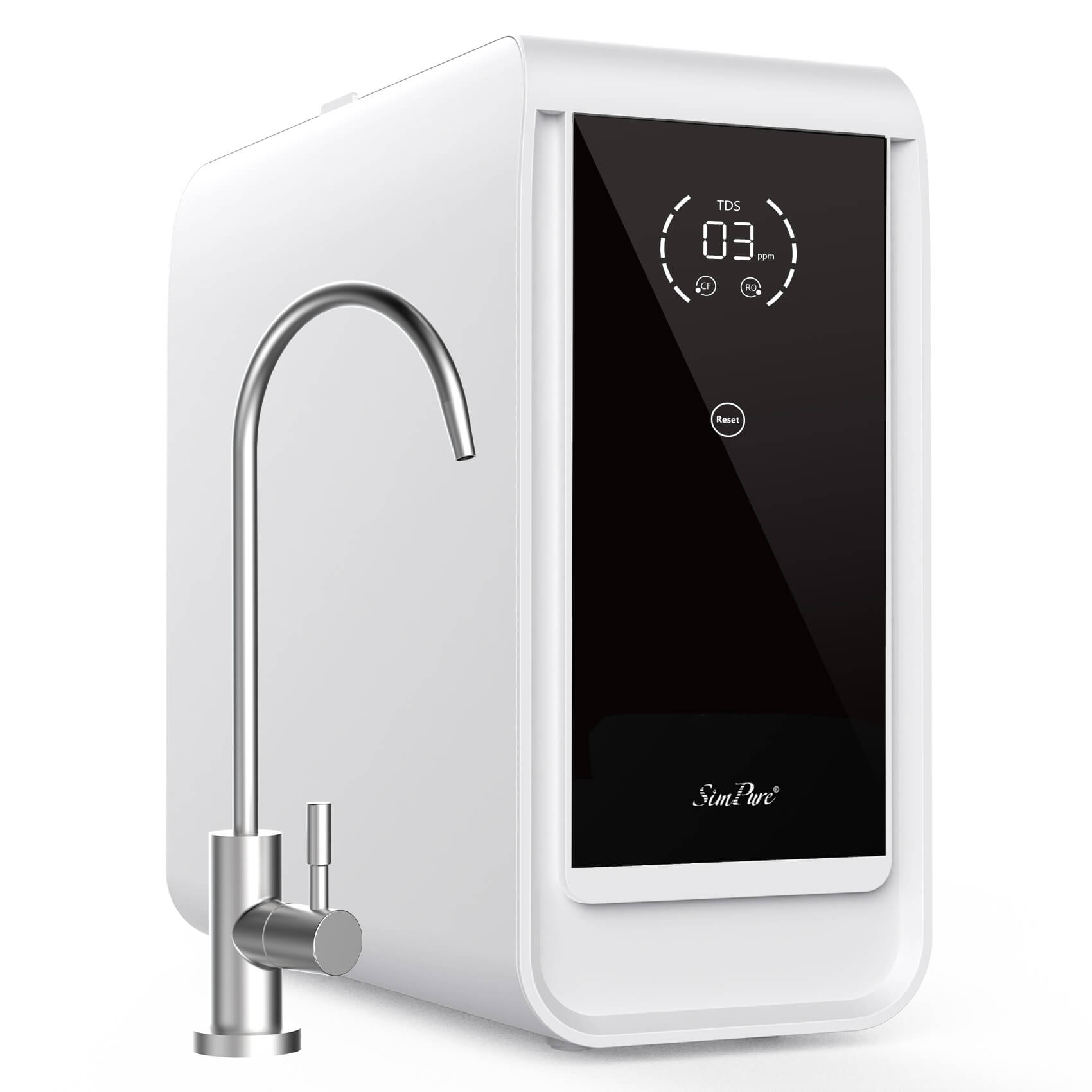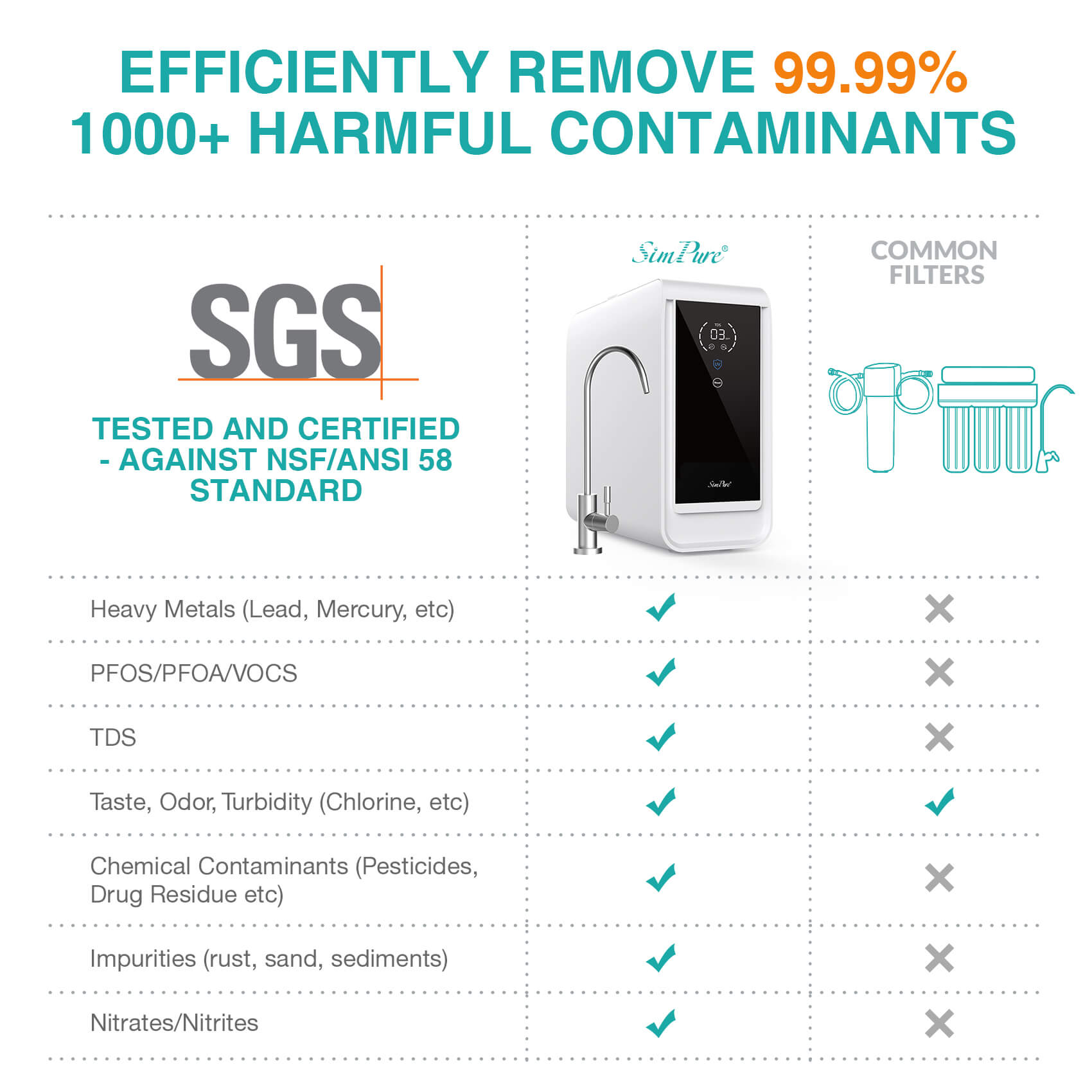Does your new reverse osmosis system produce water that tastes strange? Bitter, metallic, or even plastic-like? You're probably wondering if something went wrong. This blog explains why RO water can taste bad at first and what you can do about it. We’ll walk you through the possible causes and give you practical solutions—step by step. Whether it’s a filter issue or setup mistake, you’ll know what to check and how to fix it fast.
Why Does My New RO Water System Water Taste Bad?

If your reverse osmosis water doesn’t taste as fresh or clean as expected, you’re probably wondering what went wrong. The good news is that most taste issues in new RO systems are temporary. In the next section, we’ll break down the most common reasons your water might taste bad.
1. Residual carbon dust from new RO filter components
New RO systems often contain carbon block filters. During manufacturing, fine carbon particles (carbon dust) may remain inside. When not flushed properly, this dust can enter your drinking water, causing a gritty or dirty taste.
How to fix it:
Flush the system thoroughly before first use. Run at least 3–5 gallons of water through the system (check your manual for specifics). If taste persists, remove the carbon filter, rinse it under clean water, then reinstall and flush again. Always use certified filters to ensure clean performance.
For a more detailed guide, read Why Do You Have to Flush a New Water Filter.
2. Plastic or rubber odors from tubing and tank
While carbon dust affects taste due to fine particles from the filters, another common source of bad taste in a new RO system comes from the materials used in the system’s tubing and storage tank.
Why it happens:
Most RO systems use food-grade plastic tubing and storage tanks with a rubber bladder inside. When these components are brand new, they may release harmless chemical odors—often described as plastic, rubber, or “new car” smell. These odors can leach into the water, especially if the system hasn’t been used or flushed thoroughly. Unlike carbon dust, this issue is entirely due to the material itself, not loose particles.
How to fix it:
- Flush the system completely, especially the tank, with at least 3–5 gallons of water.
- Drain the RO tank fully and refill it at least twice.
- For persistent odor, sanitize the tank with an RO-safe disinfectant or a diluted bleach solution (1 teaspoon of unscented bleach per gallon of water), let it sit for 30 minutes, then rinse thoroughly.
- Let the system run for a few days—material odors usually fade with regular use.
3. Incomplete system flushing before first-time use
After addressing carbon dust from new filters and plastic or rubber odors from system components, another major contributor to bad-tasting RO water is insufficient flushing during installation.
Why it happens:
All new RO systems need to be flushed thoroughly before you start drinking the water. This step removes loose carbon particles, factory residue, and internal preservatives used during manufacturing. If flushing is rushed or skipped, these contaminants remain in the system—and in your water. Even high-quality systems will produce poor-tasting water if this step isn't done properly.
How to fix it:
- Follow your manufacturer’s flushing instructions carefully. Most recommend flushing at least 3 to 5 gallons, or more for tankless systems.
- For systems with storage tanks, perform a complete fill and drain cycle 2–3 times to ensure fresh water throughout.
- If water still tastes off after flushing, remove the filters, rinse them gently under clean water, reinstall, and flush again.
- Avoid drinking the water until the system has been properly primed and flushed.
Take an example, our SimPure Y7P-BW countertop RO system has one-touch flushing function. Most of SimPure countertop reverse osmosis systems have this function to help you get fresh RO water quickly.
4. New filters undergoing initial break-in process
After flushing your system to remove carbon dust and material odors, you may still notice an unusual taste because your new filters are going through a break-in period.
Why it happens:
Activated carbon and other filtration media need some time to “settle” and fully activate when first used. During this period, tiny amounts of trapped particles or natural filter byproducts can leach into the water, causing slight taste changes. This is normal and temporary.
How to fix it:
- Continue using and flushing the system as recommended by the manufacturer.
- Avoid drinking the first few gallons of water from each new filter.
- The taste typically improves after 3–7 days of regular use as the filters stabilize.
- If the taste persists beyond this, check for other issues or contact support.
5. Taste from RO storage tank rubber bladder
Even after flushing and filter break-in, your water’s taste may be affected by the storage tank in your RO system.
Why it happens:
Most RO tanks use a rubber bladder or liner to hold purified water. New tanks can impart a slight rubbery or plastic taste, especially if the tank wasn’t properly sanitized before use. Additionally, if water sits in the tank too long, it can develop a stale taste.
How to fix it:
- Sanitize the storage tank following manufacturer guidelines, using food-safe cleaners or mild bleach solutions.
- Flush the tank completely and refill it regularly to prevent water stagnation.
- Consider replacing old tanks if the taste persists long-term.
- Regular maintenance helps ensure fresh-tasting water from the tank.
6. Poor source water quality affecting final taste
Even the best RO system can struggle to produce perfect-tasting water if the source water has high levels of contaminants.
Why it happens:
Tap water with elevated total dissolved solids (TDS), chlorine, sulfur, or heavy metals can impact the taste after filtration. While RO membranes remove most impurities, some residual taste may remain, especially if the source water is heavily treated or contains unusual chemicals.
How to fix it:
- Test your source water for TDS, chlorine, and metals.
- Use pre-filters like activated carbon to reduce chlorine and odor before RO filtration.
- Consider adding a remineralization filter to improve taste and balance pH.
- If source water quality is very poor, additional purification steps or water softening might be needed.
7. Low-quality or uncertified filters causing bad flavor
Using generic or uncertified filters can negatively impact water taste and safety. Low-quality filters may not remove contaminants effectively or can leach chemicals, plasticizers, or off-flavors into the water. This is especially common when replacement filters don’t meet NSF/ANSI standards.
How to fix it:
- Always use NSF/ANSI-certified filters recommended by your RO system manufacturer.
- Purchase filters from reputable brands and authorized dealers.
- Replace filters on schedule to maintain water quality.
- Avoid third-party filters that lack proper testing or certification.
8. Installation issues with membrane or flow restrictor
Improper installation—such as a misaligned membrane, incorrect flow restrictor, or loose connections—can reduce filtration efficiency and allow impurities to pass through, impacting taste. A damaged or expired membrane may also fail to remove contaminants properly, leading to unpleasant flavors.
How to fix it:
- Have a professional inspect your RO system installation for proper setup.
- Check that all tubing connections are secure and leak-free.
- Replace the RO membrane if it’s damaged or past its recommended lifespan (typically 2–3 years).
- Follow manufacturer guidelines carefully during installation and maintenance.
How to Make Reverse Osmosis Water Taste Better?

After troubleshooting initial taste problems, many users want to enhance the flavor and mouthfeel of their RO water. Because RO removes nearly all minerals, the water can sometimes feel bland or less satisfying. The following tips will help you improve the taste and quality of your filtered water, making it enjoyable for drinking, cooking, and brewing.
1. Add a Remineralization Filter
- Adds essential minerals like calcium and magnesium
- Balances pH and improves mouthfeel
- Makes water taste “smoother” and less flat
Or you can buy the RO system with a built-in alkaline filter like SimPure T1-400ALK or SimPure Y9A reverse osmosis system.
2. Use Mineral Drops or Electrolyte Solutions
- Drops with trace minerals can be added directly to water
- Quick and customizable flavor enhancement
3. Chill Water Thoroughly
- Cold water generally tastes fresher and crisper
- Cooling reduces perception of flatness
4. Use a Water Aerator or Fountain
- Introducing air bubbles can improve taste perception
- Adds slight effervescence, enhancing freshness
5. Store Water in Glass or Ceramic Containers
- Avoid plastic taste from storage bottles
- Glass preserves water’s natural flavor better
6. Infuse Water with Natural Flavors
- Add slices of lemon, cucumber, or fresh herbs
- Natural subtle flavors improve drinking experience
7. Carbonate Your RO Water
- Sparkling water adds texture and sharpness
- Can mask any blandness from pure RO water
8. Use a Post-Carbon Filter (Polishing Filter)
- Further removes odors and improves taste
- Polishes water for a cleaner mouthfeel
In summary, unpleasant taste in new RO water is normal at first and fixable. Follow flushing steps, maintain your system, and consider remineralization to enjoy great-tasting water quickly.




